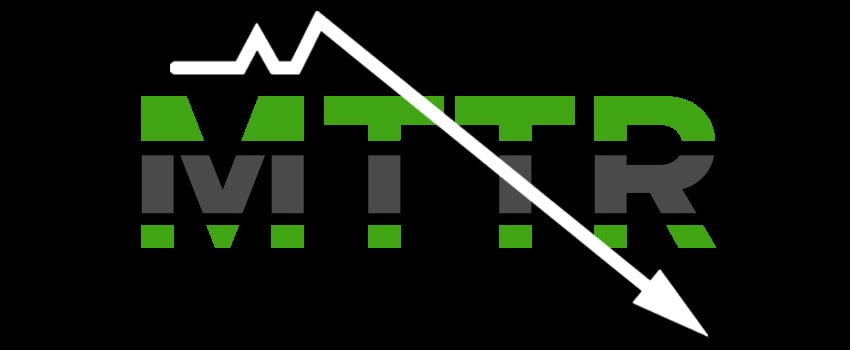
Seven Essential Components of a Successful Improvement Program
Introduction
If you’re following IT service management (ITSM) trends, you’ll have noticed continuous improvement is “the new black,” known to the ITIL-aware as “continual service improvement (CSI)”.
Whether you prefer ‘continual’, or ‘continuous’, they share the same origins and core concepts, and represent a management philosophy and ongoing commitment to an effort to improve products, services, and their supporting processes through a combination of incremental, and breakthrough change.
The theory of continuous improvement is of course far from new. Its lineage spans the Egyptian pyramid builders, Eli Whitney and the cotton gin, Walter Shewhart’s ‘cycle of learning’, Edward Deming’s programmatic approach, and contemporary lean thinking at large.
The roots of modern continuous improvement can be traced back to the late 1800s, and programs like the one designed by National Cash Register to reward employees for ideas that brought about positive change, as well as help foster better management-employee relationships.
During World War II, the US Government formalized continuous improvement methods and instruction, to enhance industrial output on a national scale, placing them at the very core of the Training Within Industry (TWI) program. TWI was designed to provide a consulting service to companies whose personnel were being conscripted into the US Army – an early example of the “do more with less” slogan.
When imported into Japan to rebuild the country post war, TWI formed the basis for the kaizen culture, later popularized by the successes of the Toyota Motor Company, and leading to the lean thinking movement. When Japanese instructors subsequently trained US automobile manufacturing workers in their new lean improvement methods, imagine the surprise when they referenced an old copy of the TWI manuals as the genesis!
Why the history lesson? Because continuous (or continual) improvement is something every IT organization should have embedded in its practices. The ITSM industry epiphany, although welcome, comes with the risk of not learning from the experiences of those who created, and put into practice, successful continuous improvement programs.
Ingredients for Success
Just as you’d expect, continuous improvement itself has not, and does not, stand still. It continuously improves! There is an extensive toolbox outside of ITSM, and history points to many important elements needed for the successful establishment and operation of a program. Here are a few of the most noticeable:
- Defining the problem: As far back as 1948, Carnegie Mellon insisted on including a method for defining a problem and its impact upon one or more affected parties. Not everything is a problem of course, but from the outset the continuous improvers realized they needed a means of persuading all to help some. They included ‘define the problem’ as part of the first stage of what we now know as the Plan-Do-Check-Act (PDCA) cycle. They also emphasized the need to personalize the impact of what might be a common problem, and by doing so, engage and mobilize all the parties you need to properly eliminate the problem.
- Being customer centric: Look at everything from the perspective of those served – the customer. Embed the ability to “walk a mile in the shoes” of your customers, placing yourself in their situation to guarantee you understand what they value, and the true impact of a problem or potential improvement to them, and their interests.
- Gaining leadership commitment: Even if it’s only at the outset, and for an initial period, gain visible commitment from leadership. Interestingly, they found this easier when they were able to express a problem and its impact in leadership terms, linked directly to one or more management objectives, or the interests of customers.
- Socialization of the program: Create a plan to socialize (integrate) the program within the organization. For example, using the ITSM context, ensuring the improvement program is recognized and procedurally integrated with existing applications, systems, and product development life cycles.
- Focusing on incremental change: Perhaps most importantly, ensuring each change (improvement) is carefully scoped to be as small as possible. It was Walter Shewhart’s cycle of learning, later known as Plan-Do-Study-Act (PDSA), which insisted you change something on a small scale, study the result, and keep or discard the change before changing anything else. Breakthrough change was regarded as something you mature towards once you have a comprehensive knowledge of the working environment.
- Including cultural transformation: The ability to subtly change the attitude, behavior, and culture of the workforce as part of making each change is key. They noticed changing things without preparing the workforce for the change, involving them in the reasons for the change, or explaining the consequences of the change (especially when it directly affected them), was the primary cause for failure, or lack of acceptance and sustainability of the change.
- Having a check and balance: Before putting any change into effect, ensuring you have an established set of checks and balances to efficiently review the reasoning for the change, the risks and benefits involved, and to approve the resources required to effect the change. Post change, help review the extent to which the targeted benefits are realized, and the costs incurred. Nowadays, again in ITSM context, this responsibility may lie with a change management process or its equivalent.
Obviously things change, and seemingly at an ever increasing pace. Every organization needs a means of changing, and adapting to changes elsewhere.
Introducing a continuous improvement program into an organization is itself fraught with challenges. Hopefully, history provides us with a few helpful lessons, crystalized in the seven essential components. They are certainly worth considering to avoid ITSM’s newfound promotion of such a program being tagged as “… the new black”, a passing fad or temporary fashion statement.
After all – the color black and continuous improvement do share something – they are always in style.






